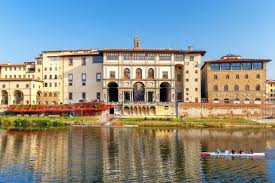Italy: Amazing museums to consider

Rome: Italy has often been described as a cultural superpower and for good reason—it has more Unesco World Heritage Sites than any other country, and is home to the Uffizi Galleries and Vatican Museums, repositories of some of the world’s most spectacular art. But it has many lesser-known, exceptional museums, where you can can take in a broad range of masterpieces and often do so without the crowds. Here are places to consider for your next trip.
Rome – palazzo quirinale. Larger than Windsor Castle and Versailles, the Palazzo Quirinale, one of the president of Italy’s official residences, is hardly an obscure spot in Rome, but until 2015, visits were restricted to Sundays, so it didn’t make the to-see list for many travelers. The Quirinale, now open five days a week, has long been a seat of power, home to numerous popes (and the site of four papal enclaves), and later the residence of Italian kings. Although its location on the Quirinal hill has been in use since Roman times, the current-day palace was built much later, in the 16th century. There’s a lot to take in here, and you have the choice of two itineraries when you visit. Both routes include the palace’s many stately reception rooms and salons, among them a lavish Hall of Mirrors and an opulent Grand Ballroom. The second itinerary also takes in the extensive porcelain collections (with pieces by Ginori and Sèvres), Carriage Museum and gardens. Tours must be booked a minimum of five days in advance.
Museo Napoleonico. Napoleon certainly left his mark throughout Europe, and while his armies seized the Eternal City in 1798 and declared it a Republic (although a French controlled one), and he later claimed the title King of Italy, the emperor himself never came to town. That’s not to say the Bonapartes didn’t have a presence in Rome. Napoleon’s mother, brothers and sister Pauline, who married a Borghese prince, lived here and a descendant of Napoleon’s brother Luciano, Count Giuseppe Primoli, created the collection of Napoleon-era art, decorative objects and memorabila that now makes up the Museo Napoleonico, a ten-room museum in the Palazzo Primoli, not far from the Piazza Navona.
Palazzo Reale. With a long history of monarchs, princes, and poweorful dukes ruling various parts of the Italian peninsula, it’s not surprising that Italy has a number of royal palaces to visit. The Palazzo Reale in Genoa, built in the 17th century by the aristocratic Balbi family, became one of the residences of the Italian royal family in 1824. Rooms are lavishly decorated with frescoes, stuccowork and rare decorative items, and the art collection contains significant names, among them Anton van Dyck, Bernardo Strozzi and Luca Giordano. Befitting a royal palazzo, there’s even a Versailles-style Galleria degli Specchi (Hall of Mirrors).
Galeria Nazionale Di Palazzo Spinola: This palace, not far from the Palazzo Reale, was owned by some of Genoa’s most illustrious families, including the Grimaldi, Pallavicino, and, obviously, Spinola. You get a two-fer here—a house museum on the lower floors showing how aristocratic families lived during the 17th and 18th centuries, and an art museum on the upper floors with works by Peter Paul Rubens, Anton Van Dyck and Pieter Brueghel.
Palazzo Madama And The Museo Civico D’arte Antica. The Palazzo Madama, located on a site used by the Romans but with origins in the Middle Ages, was once home to duchesses of the House of Savoy (referred to as madama reale, hence the palazzo’s name). Here you’ll find the Museum of Ancient Art, and while you might expect a repository of artifacts from the Roman Empire, the large (some 70,000-piece) collection of art, sculpture, decorative objects and porcelain focuses on later periods, taking you on a rich aesthetic journey through the Middle Ages, and Renaissance and Baroque eras.
Pinacoteca Giovanni E Marella Agnelli. Considered the unofficial king of Italy, the legendary Gianni Agnelli, longtime head of Fiat, and his wife Marella, a powerful tastemaker, established the museum shortly before the industrialist’s death in 2003. Located in the former Lingotto Fiat factory remodeled by Renzo Piano to be an exhibition and event space with hospitality and shopping facilities, the gallery showcases the rarified Agnelli art collection, with works by Canaletto, Tiepolo, Canova, Matisse, Piscasso and Modigliani.
Museo Poldi Pezzoli. On Via Manzoni near the Golden Quadrangle, the city’s shiny nexus for Italian luxury labels, you’ll find this elegant house museum, displaying the collections of Gian Giacomo Poldi Pezzoli, a 19th-century Milanese arts patron, with works by major names like Botticelli, Giovan Battista Tiepolo, Andrea Mantegna, Francesco Guardi and Giovanni Bellini. The much-anticipated new exhibit, “Leonardo and the Litta Madonna “ opening on November 7, 2019 (and running to February 10, 2020), features the Litta Madonna masterpiece on loan from the Hermitage in St. Petersburg, accompanied by paintings and drawings by Da Vinci and his pupils.
Villa Pignatelli. Naples’ best-known museums, like the Royal Palace of Caserta, dazzle with their size, but if you like to experience grandeur in a lower key and on a more intimate scale, head to the Villa Pignatelli. As far as Italian landmarks go, this is fairly new, dating from 1826, altough in its nearly 200-year history the villa has changed hands several times belonging to prominent families like the Actons, Rothschilds and Pignatellis, a multi-titled aristocratic Neapolitan dynasty. Come here to see the beautifully appointed rooms, like the Rothschild-era Louis XIV “red lounge”; the Louis XV “blue lounge” dating from the Pignatelli period; the porcelain collection; and rare decorative objects, along with a carriage museum. The villa is also the site of contemporary photography exhibits.
Galleria Nazionale Delle Marche in the Palazzo Ducale di Urbino. A beautiful fortress hilltown in Le Marche, Urbino is one of Italy’s Renaissance wonders, and a place you can usually experience without throngs of visitors. Federico da Montefeltro, the duke of Urbino, and the city’s answer to other great art patrons of the period like Ludovico Sforza in Milan and Florence’s Lorenzo de Medici, established a city and court here renowned for its cultural sophistication. Montefeltro was headquartered in the Palazzo Ducale, which you can visit along with the Galleria Nazionale delle Marche located in the palace, with works by Raphael, Piero della Francesca and Titian.





